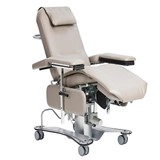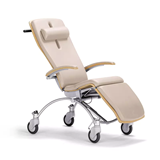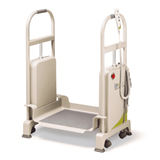Key Takeaways
- Culture is your competitive advantage. In a multidisciplinary clinic, a strong team culture improves patient outcomes, reduces errors, boosts staff retention, and is a key requirement for meeting RACGP accreditation standards.
- Break down professional silos. Actively foster communication between GPs, nurses, allied health, and admin staff through regular, structured clinical meetings and shared digital communication tools.
- Define a shared vision. Your team needs a common purpose beyond their individual disciplines. Involve everyone in defining your practice's values and patient care goals.
- Invest in shared spaces. A comfortable tea room or staff breakout area isn't a luxury; it's a critical space for informal communication and relationship building between disciplines.
- Clarify roles, foster mutual respect. Ensure every team member, from the receptionist to the specialist, understands and respects the unique skills and contributions of others. Shadowing opportunities can be invaluable.
- Measure and celebrate collaboration. Track team morale through simple surveys and actively celebrate successes achieved through multidisciplinary teamwork to reinforce the desired culture.
- Model the behaviour you want to see. Practice managers must actively demonstrate collaboration by being visible, publicly valuing all roles, facilitating introductions, and sharing positive team feedback.
Introduction: The power of a unified team
The model of healthcare delivery in Australia is evolving. Multidisciplinary clinics, bringing together GPs, nurses, allied health professionals, and administrative staff under one roof, are becoming the gold standard for providing comprehensive, patient-centred care, especially for the one in two Australians living with chronic conditions, according to the Australian Institute of Health and Welfare (AIHW). While this model offers immense clinical benefits, it also presents a significant management challenge: how do you build a cohesive team culture when your staff come from diverse professional backgrounds, often with different priorities and ways of working?
A fragmented team culture, marked by professional silos and poor communication, isn't just unpleasant; it's a direct risk to patient safety and operational efficiency. The Australian Commission on Safety and Quality in Health Care (ACSQHC) consistently identifies communication failures as a leading cause of clinical errors. This article provides a practical guide for Australian practice managers on how to intentionally build a strong, collaborative team culture within your multidisciplinary clinic, transforming a collection of individuals into a high-performing unit.
Understanding the unique cultural challenges
Building a team culture is hard work in any setting. In a multidisciplinary clinic, you face specific hurdles:
- Professional Silos: Different disciplines (medicine, nursing, physiotherapy, psychology, administration) have their own training, language, and professional hierarchies. This can lead to misunderstandings and a lack of mutual respect.
- Differing Priorities: A GP might be focused on diagnostic speed, while an allied health professional prioritises holistic assessment, and admin staff focus on billing efficiency. Aligning these perspectives requires effort.
- Physical Separation: Often, different disciplines work in different parts of the building or have separate reporting structures, limiting opportunities for informal interaction.
- Lack of Shared Understanding: Team members may not fully understand or appreciate the skills and pressures faced by their colleagues in other roles.
Recognising these inherent challenges is the first step towards actively addressing them.
Building the foundation defining a shared vision and values
A strong culture starts with a shared sense of purpose. Your team needs a "North Star" that unites everyone, regardless of their specific role. This isn't just about a mission statement hanging on the wall; it's about a living set of values that guides daily behaviour.
- Involve everyone in the process. Don't create your values in isolation. Run a workshop involving representatives from all areas of the practice, clinical and non-clinical. Ask simple questions: "What kind of practice do we want to be?", "What does exceptional patient care look like?", "How should we treat each other?".
- Keep it simple and actionable. Aim for 3-5 core values that are easy to remember and translate into daily actions. Examples could include: "Patient First," "Collaborative Care," "Mutual Respect," "Continuous Improvement."
- Make it visible. Display your shared values prominently. Refer to them during team meetings and performance reviews. Use them as a framework for decision-making.
Breaking down silos fostering communication and collaboration
Intentional communication strategies are essential to bridge the gaps between disciplines. You need to create both formal and informal opportunities for your team to connect and collaborate.
- Regular, structured team meetings:
- Clinical Meetings: Hold weekly or fortnightly multidisciplinary clinical meetings focused only on patient care. Discuss complex cases, share clinical pearls, and coordinate treatment plans. This builds clinical trust and respect.
- Operational Huddles: A brief (10-15 minute) daily or twice-weekly huddle involving both clinical and admin staff to discuss the day's schedule, identify potential bottlenecks, and share important operational updates.
- Leverage shared digital tools: Your Practice Management Software (PMS) and internal communication platforms (like secure messaging or a team app) are vital. Ensure everyone is trained to use them effectively for:
- Task Management: Assigning non-clinical tasks related to patient care (e.g., booking follow-ups, chasing results).
- Internal Communication: Sharing quick updates or asking non-urgent questions without interrupting clinical workflow.
- Case Conferences: For complex patients, formal case conferences involving the GP, relevant allied health professionals, and practice nurses ensure everyone is aligned on the care plan, a key requirement of the RACGP Standards on comprehensive care.
Creating shared spaces and rituals
Culture isn't just built in meetings; it's forged through informal interactions and shared experiences. Your physical layout and daily rituals play a crucial role.
A realistic scenario: The separate tea rooms
A large clinic has a separate tea room for doctors and another for admin and nursing staff.
- The Problem: This physical separation reinforces professional silos. There are limited opportunities for informal chat, building personal rapport, or quick, collaborative problem-solving between groups. Misunderstandings and 'us vs. them' attitudes can fester.
- The Solution: The practice manager invests in creating a single, large, comfortable staff room accessible to everyone. They ensure it's well-equipped and becomes the natural hub for breaks. This simple change dramatically increases informal interaction, breaks down hierarchies, and fosters a sense of a single team.
Other simple rituals:
- Morning Huddle Coffee: Start the daily huddle around the coffee machine.
- Monthly Team Lunch: Order in lunch once a month for everyone to share.
Role clarity and fostering mutual respect
Misunderstandings often arise when team members don't fully appreciate the roles, skills, and pressures faced by their colleagues in different disciplines.
- Clear Role Definitions: Ensure everyone has a clear position description that outlines their responsibilities and scope of practice.
- Cross-Disciplinary Shadowing: One of the most powerful ways to build respect is through short shadowing opportunities. Arrange for a receptionist to spend an hour observing a nurse's workflow, or for a GP to sit in on a physiotherapist's consultation (with patient consent). This firsthand experience builds empathy and understanding faster than any presentation.
- Highlighting Expertise: Use team meetings to have different professionals briefly present on their area of expertise or a recent professional development activity. This showcases the diverse skills within the team.
Leadership behaviours that model collaboration
Your actions as a leader set the cultural tone. To build a truly collaborative multidisciplinary team, you need to actively model the behaviours you want to see. Your team watches how you interact and takes cues directly from your example.
Start by being visible and engaged. 'Walk the floor' daily. Spend brief moments chatting informally with staff from all disciplines in their workspaces. Ask about their day, listen to their challenges, and show genuine interest. This breaks down barriers and makes you more approachable.
Next, make a point to publicly value every role. In team meetings or practice-wide communications, specifically acknowledge the contributions of non-clinical and allied health staff. Highlighting how a receptionist's quick thinking helped a patient, or how a physiotherapist's input improved a care plan, demonstrates that every team member is essential.
When new staff join, take the time to facilitate cross-disciplinary introductions. Personally introduce the new GP to the lead practice nurse and the senior receptionist, briefly explaining how their roles intersect. This simple act immediately establishes connections beyond their immediate team.
Finally, share positive feedback widely. When you receive a patient compliment that mentions great teamwork or seamless care between departments, ensure that feedback is shared with everyone involved. Celebrating collaborative successes powerfully reinforces the value of working together.
Conclusion
Building a cohesive team culture in a multidisciplinary clinic is an ongoing process, not a one-off project. It requires intentional effort from leadership to break down traditional silos, foster open communication, and create a shared sense of purpose. However, the rewards are immense. A truly integrated team collaborates more effectively, leading to safer, higher-quality patient care, improved operational efficiency, and a more positive and sustainable working environment for everyone. In the complex world of modern Australian healthcare, a strong team culture is not just a 'nice to have'; it's your practice's most valuable strategic asset.



-160x160-state_article-rel-cat.png)









